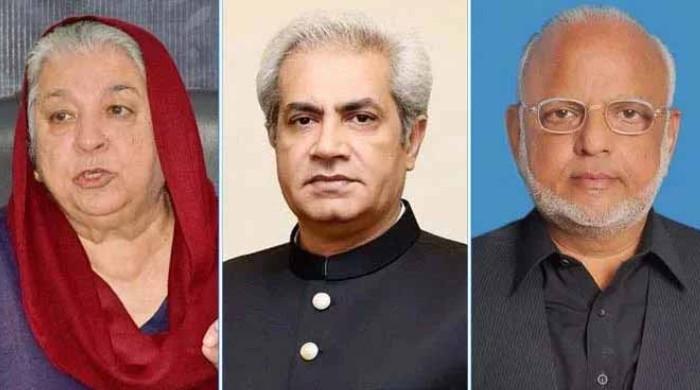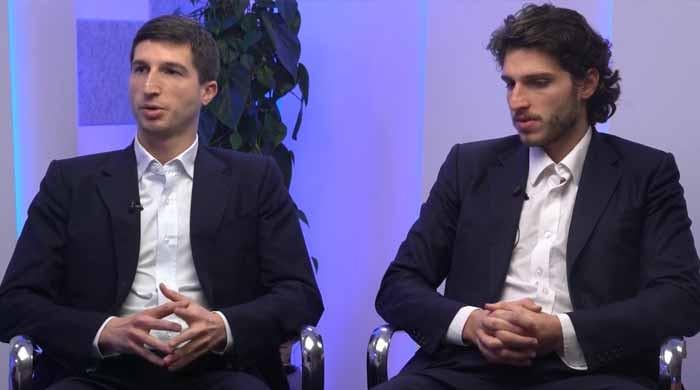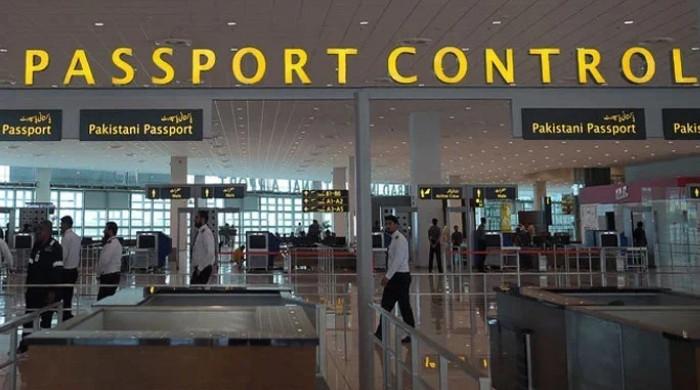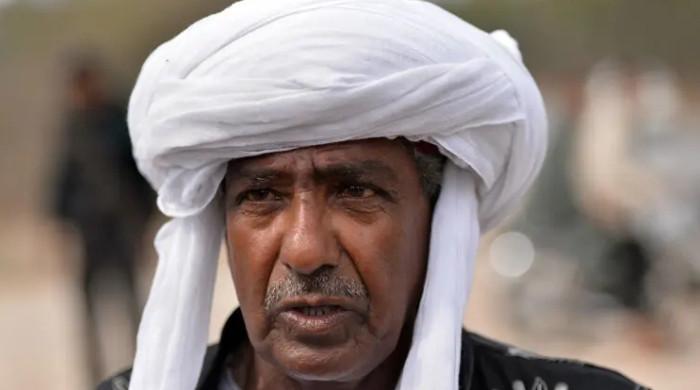Three heatstroke cases reported to Karachi's JPMC as mercury rises
Hospital administration says people affected of heatstroke are admitted to the Heatstroke Ward for treatment
May 23, 2024

- JPMC requests citizens to take precautionary measures.
- "Avoid getting out of houses unnecessarily."
- Heat spell has gripped Karachi for past few weeks.
KARACHI: At least three cases of heatstroke have been reported to the Jinnah Postgraduate Medical Centre (JPMC) in Karachi on Thursday.
The hospital administration said the youth affected by heatstroke were admitted to the Heatstroke Ward for treatment.
The JPMC Heatstroke Centre’s in-charge requested the citizens to take precautionary measures to protect themselves from the scorching hot weather.
“Avoid getting out of houses unnecessarily,” advised the JPMC official.
Karachiites have been left sweltering because of the recent heat spell that has gripped the metropolis for the past few weeks and it is forecast to prevail till the first week of June.
Mercury in Karachi rose to 38°C on today with a feel-like 41°C temperature.
As per weather expert Jawad Memon on May 19, there was no chance of rain in the megalopolis for one week. He had said the coastal areas might experience more intense sweltering weather.
Heatwave: Here's how you can prevent heat stroke
Authorities at both the federal and provincial levels have taken precautions to protect people from the deadly consequences such as heat-related illnesses as chances of an increase in heat-related issues such as heatstroke are likely to impact the population. Heatstroke is considered the most extreme form of heat-related illness with mortality rates ranging from 10% to 80%.
Heatstroke is defined as a body temperature higher than 40.6 degrees Celsius because of environmental heat exposure following which a person normally collapses.
Studies reveal that heatstroke can be avoided by adopting simple preventive measures, but if there is a delay in treatment, the mortality rate of heatstroke can be as high as 80%.
Early diagnosis and cooling may reduce the mortality rate to 10%.
The National Disaster Management Authority and other provincial authorities have issued a heatwave advisory for the general public asking individuals to take immediate necessary measures.
The advisory stated that infants, elderly persons, athletes and outdoor workers are at high risk for heatstroke.
Symptoms of heatstroke
Generally, the symptoms of heatstroke include profuse sweating or the absence of sweating with hot red or flushed dry skin, weakness, lethargy, chills, throbbing headache, high body temperature, hallucinations, confusion, dizziness and slurred speech.
If one is having any of the symptoms, they should immediately be taken to the nearest healthcare facility.
How to prevent heatstroke?
- Heat- or sun-stroke is a preventable condition and the following are some of the common preventive measures that the advisory has shared:
- Avoid going outside during the hottest time of the day.
- Avoid strenuous physical activity if you can. If you must do strenuous activity, do it during the coolest part of the day, which is usually in the morning between 4am and 7am.
- Stay in the shade.
- Do not leave children or animals in parked vehicles.
- Drink plenty of water and avoid getting dehydrated.
- Limit time in direct sunlight during hot weather or in places with high environmental temperatures.
- Refrain from vigorous physical activities in hot and humid weather.
- Persons working under the sun should prevent dehydration and heatstroke by taking time out of the sun and drinking plenty of water/fluids.
- Patients should avoid the use of caffeine and sugar-containing soft drinks and/or tea, as it may exacerbate dehydration.
- Consume salty foods, and use an umbrella.
- Wear hats, light coloured and loose-fitting clothes during the hot/humid environmental conditions.
- Keep the body cool and hydrated by taking cool showers or baths during a heatwave.
- Use cold packs and wraps, towels, sponging, and foot baths to keep cool.
- If you feel dizzy, weak, anxious or have intense thirst and headache during a heatwave, it is best to move to a cool place as soon as possible and measure your body temperature. Drink some water or fruit juice to rehydrate.
- If you have painful muscular spasms, particularly in the legs, arms or abdomen, rest immediately in a cool place and drink oral rehydration solutions (ORS) containing electrolytes.
- Medical attention is needed if heat cramps last for more than one hour.
- Victims of heatstroke must receive immediate treatment/management.









